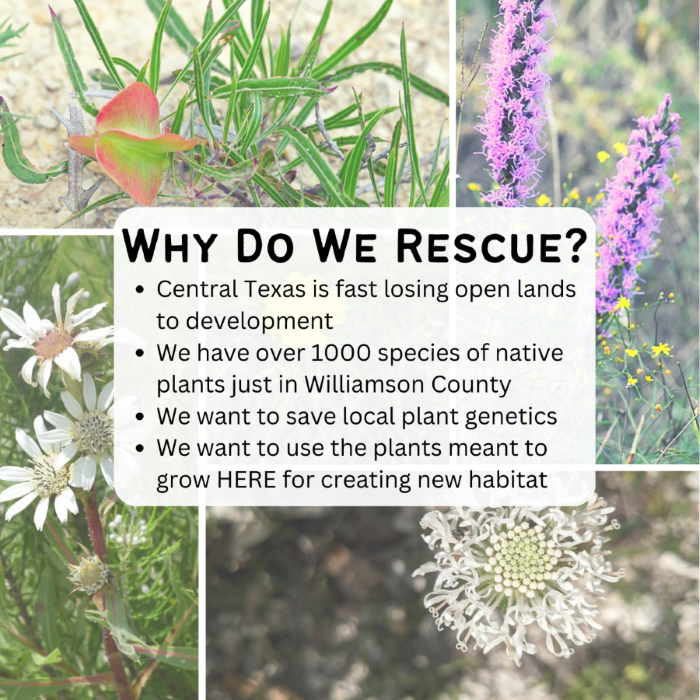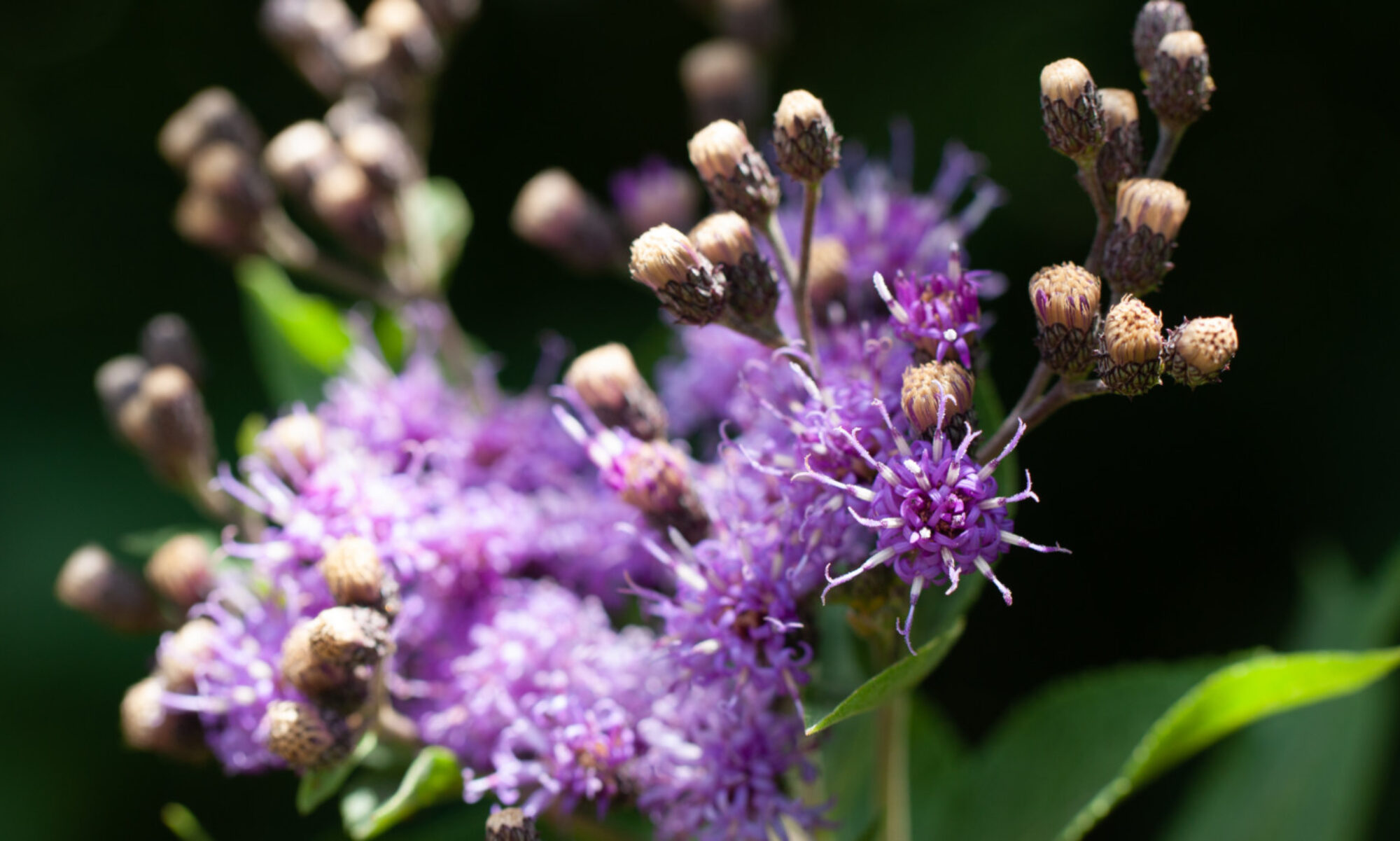Through NPSOT-Williamson County’s Native Plant Rescue Project, we work together to save native plants that are going to be destroyed by construction. The Native Plant Rescue Project coordinates the activity. “We can’t take them all, but get some of each.”
Help us conserve Central Texas plant biodiversity and support our pollinators by rescuing native plants from development.
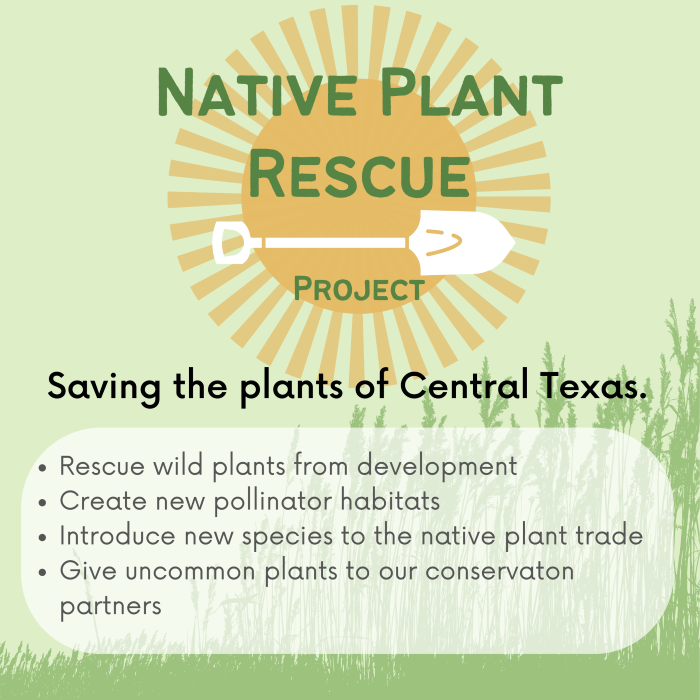
Who can help?
Due to landowner requirements, our plant rescues are only for current NPSOT members (any chapter) who are at least 18 years old. Join NPSOT at npsot.org.
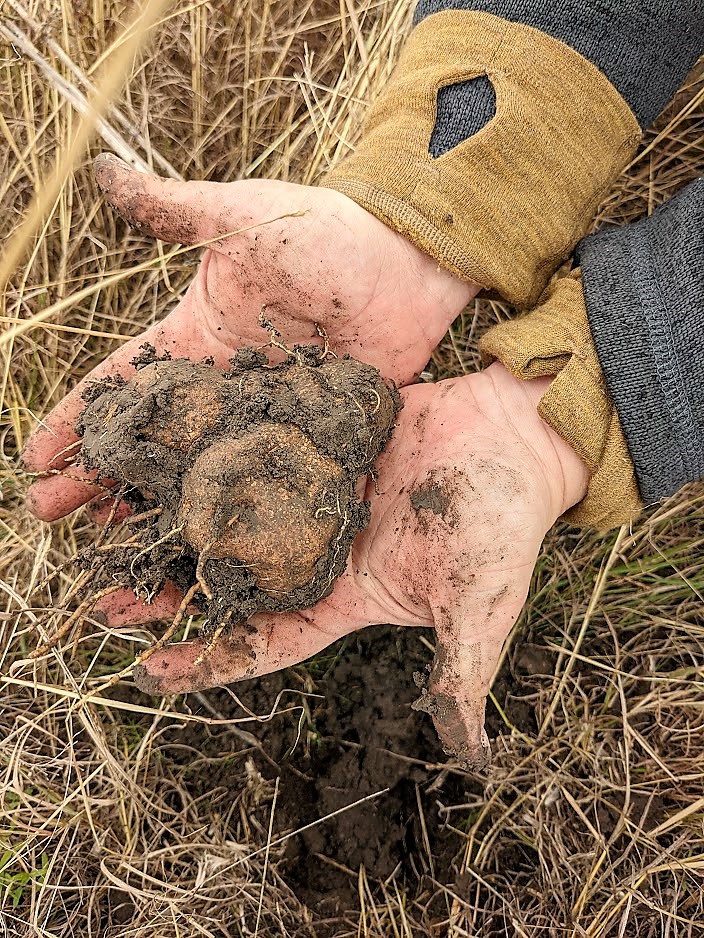
What types of plants are you rescuing?
We focus on rescuing smaller native plants, such as native wildflowers and grasses, because they transplant better and they are easier to move. We also make sure to rescue any unusual native plants that need more conservation attention.
Where do the plants go?
Our plants have four main destinations.
1. We create and maintain several school pollinator gardens, and many of the rescued native wildflowers are transplanted into these local school gardens.
2. If a plant is not currently available in the nursery trade, we give it to a native plant grower for propagation to help expand the types of natives available.
3. We take unusual and rare plants to conservation partners who use them for rare plant gardens and seed banking.
4. Finally, plants go home with our volunteers!
Our volunteers use rescued plants to create more pollinator habitat at home, including lawn-to-wildflower conversions, new pocket prairies, or just simply swapping out non-natives with natives in their existing landscape. Allowing volunteers to take plants home helps us all learn more about the plants that were meant to GROW HERE as well as ensuring that cost is never a barrier to growing more native plants at home. With rescued plants going home with volunteers, we enable more participation in the Homegrown National Park movement.
How does it work?
After obtaining a rescue agreement with the property owner, a blog post will announce the invitation to sign up. For those who sign up, the precise rescue location will be emailed to volunteers the day before. In addition to a liability waiver, volunteers will sign a code of conduct. This includes not releasing a plant rescue’s location or details, obscuring any observations made for citizen science, not returning to the rescue site, not discussing the development on social media or with the media, and back-filling holes. A rescue typically lasts 2-3 hours, but a volunteer can stay for as little as 30 minutes. For those who don’t know their plants well, we can point out species of interest and help with plant ID.
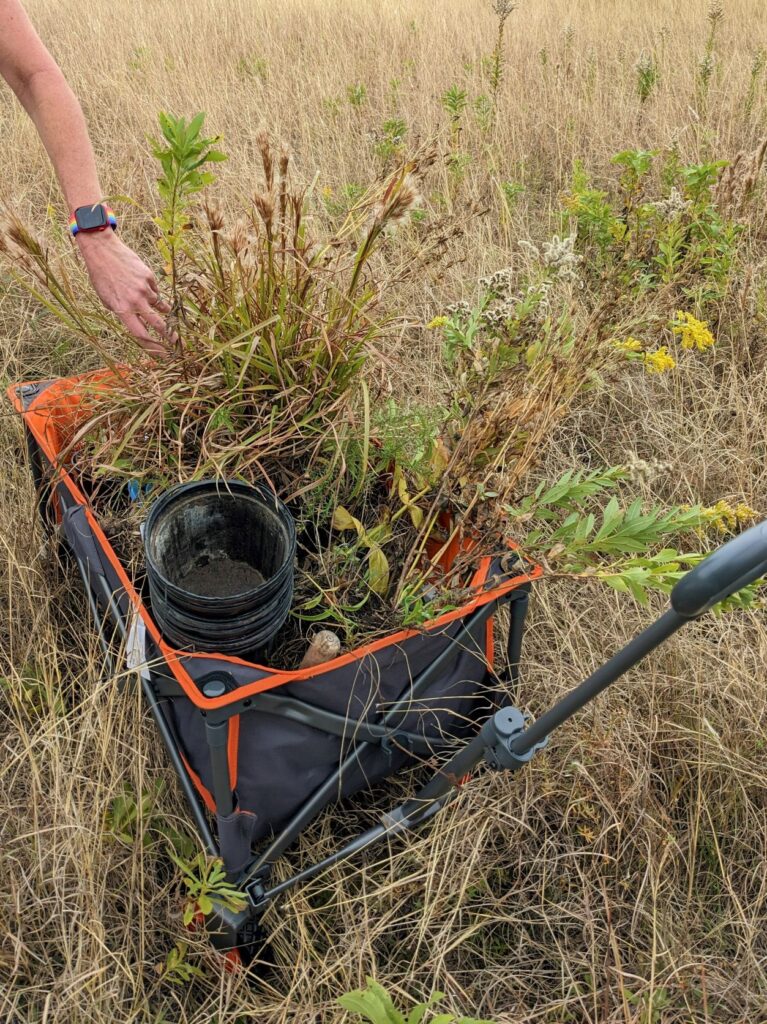
What to bring?
Bring old nursery pots or buckets or even bags for the rescued plants. A sharpshooter shovel is the favorite digging tool of our volunteers, but hori-horis and regular shovels work too. We have extra nursery pots and loaner tools if you need them. Don’t forget gloves, some water for you and the plants, and a portable wagon is a nice-to-have on larger sites.
How else to help?
In addition to helping with plant rescues by digging plants, there are many other ways to help the project. We need rescue co-facilitators to help with on-site paperwork and assisting volunteers, which allows us to invite more people to each rescue. We also need volunteers who are interested in creating or adopting a school pollinator garden, and we need volunteers to help obtain new plant rescue sites. Please let us know if you’d like to help!
“I really find it fascinating that you can walk onto a site that looks to me to be just weeds, dirt, and rocks and find beautiful cactus and plants that I would have never noticed.” – Developer
Get more information
Contact the Native Plant Rescue Project using this form.
See Instagram.
